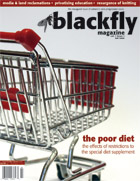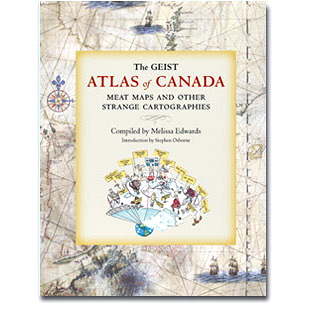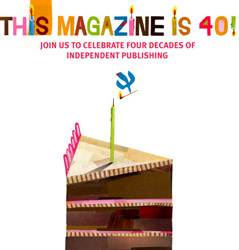
Many people talk about starting magazines, but only a few manage it; it's daunting in its details, expensive in its execution and often the talking about it is much more fun than the doing of it. That having been said, it is encouraging to see the emergence of
Blackfly magazine, a political quarterly magazine about Ontario.
As the centre of the Canadian universe -- at least in terms of population and being home to the principal financial capital -- politics as they are done in Ontario should matter to everyone inside and outside of the province. We are somewhat better at doing left- and right-wing magazines about national affairs, though there are some good examples of regional and local magazines.
Blackfly, if it can stay aloft, looks likely to add something to the discussion.
It launched in September and is due to put its second issue on the newstand in a week or so. It's published out of Toronto and has a tiny press run: like all such boutique startups, it gives new meaning to operating on a shoestring. A total of about 3,000 copies are distributed; beyond that, how the magazine is being received can only be speculation. They probably have no more than couple of hundred paid charter subscribers so far and can hope to sell maybe sell 500 single copies on selected newsstands. (That's net of the promotional and controlled copies that need to be laid about in order to make the magazine's existence known.)
Blackfly was started by six current and former students from the University of Guelph, some of whom are now at other institutions -- Ryerson University, Centennial College and Osgood Hall Law School. "I was looking for a magazine to read covering Ontario issues and I realized that there wasn't one," says Jenn Watt,
Blackfly's editor, "So I figured we'd just have to start one ourselves."
The first issue was 64 pages. It has some fairly sophisticated design touches (as much as its means allow), but is mostly fairly industrial strength and typical desktop publishing -- text heavy, black-and-white, fairly dour in its display copy. But it gives off the vibes of commitment that may find a ready audience. That depends, of course, on whether the potential readers see "taking a bite out of Ontario politics" as important. The magazine's statement about itself reads, in part:
We are a progressive magazine; we believe that current media coverage of our province severely misrepresents and ignores the issues of different groups of Ontarians. Blackfly Magazine will strive to cover those issues -- without ideological dogma or political partisanship. We believe that people are smart enough to make up their own minds. We are simply trying to provide the information needed to fully understand the issues and the contexts in which the issues exist.
The magazine offers a page of advertising (1x rate) for $750, reflective of their small and unproven circulation and probably realistic expectations. But that's not unusual for such fledglings. The subscription rate is startlingly small: $14.25 for four issues, or roughly $3.50 an issue. The cover price is $5.75.
Its contents are fairly eclectic, from a feature on Caledonia and the aboriginal blockade to how-to file a freedom of information request to an "art" story about knitting. There are reviews and interviews, and a good mix of long and short items. The magazine also runs a tidy and interesting website and publishes a blog which, so far, is mostly about promoting the magazine but has promise to be a clearing house for information about Ontario politics.
Whether
Blackfly is preaching to the choir? It's too soon to say. It's encouraging that, instead of just bitching over beers about the parlous state of things, these people actually put their money and their energy where their beliefs are. The left side of the arts and cultural publishing spectrum is relatively crowded. The second issue is always harder to put out than the first (carried forward, as it is, on a wave of enthusiasm) and clearing the hurdle of the first year, beyond which you can hope for some small public support, is a real challenge. But
Blackfly has made a good start and should be encouraged to buzz and bite for many issues to come.
 He has shot the famous and the infamous for publications ranging from the New York Times Magazine and Wired to Premiere and Life and GQ. You can see a portfolio of his pictures on his website and read some of the articles that have been written about him and his work.
He has shot the famous and the infamous for publications ranging from the New York Times Magazine and Wired to Premiere and Life and GQ. You can see a portfolio of his pictures on his website and read some of the articles that have been written about him and his work. 























